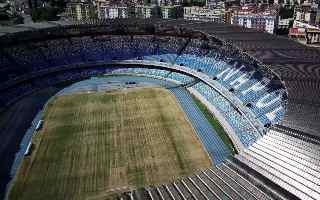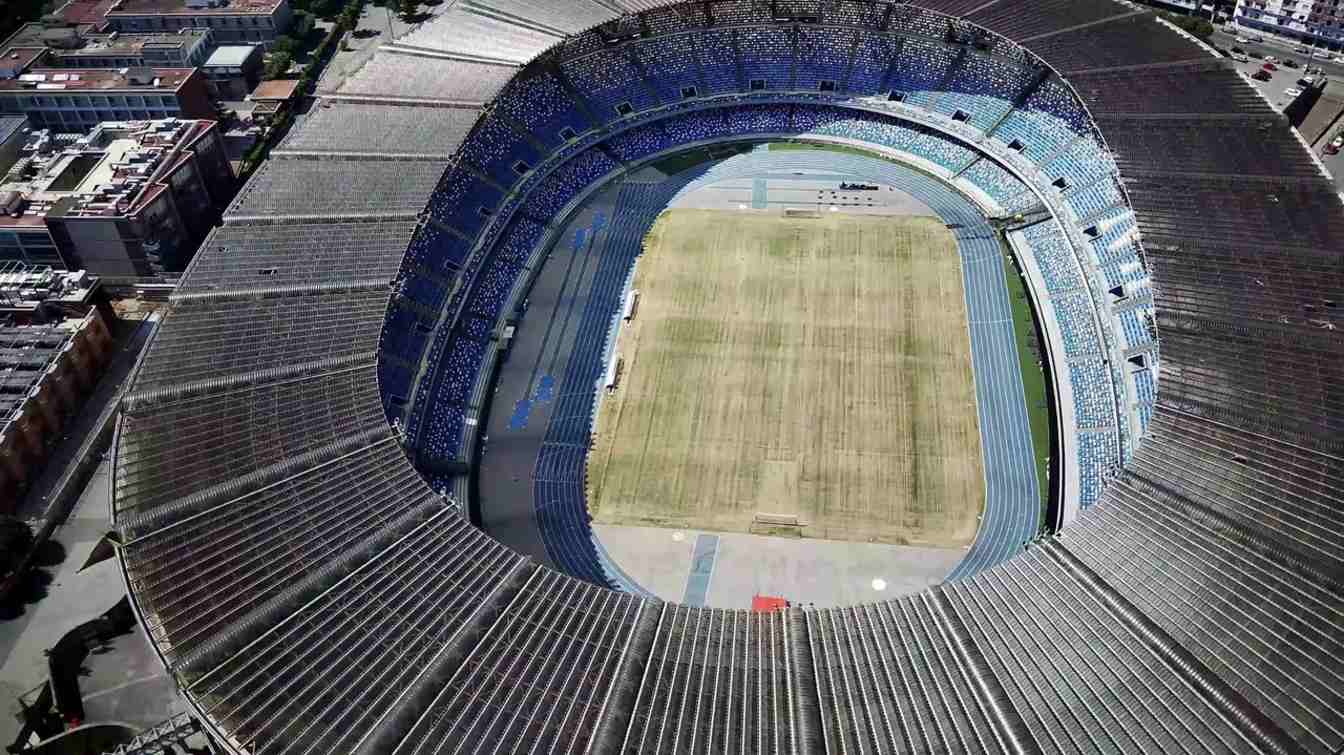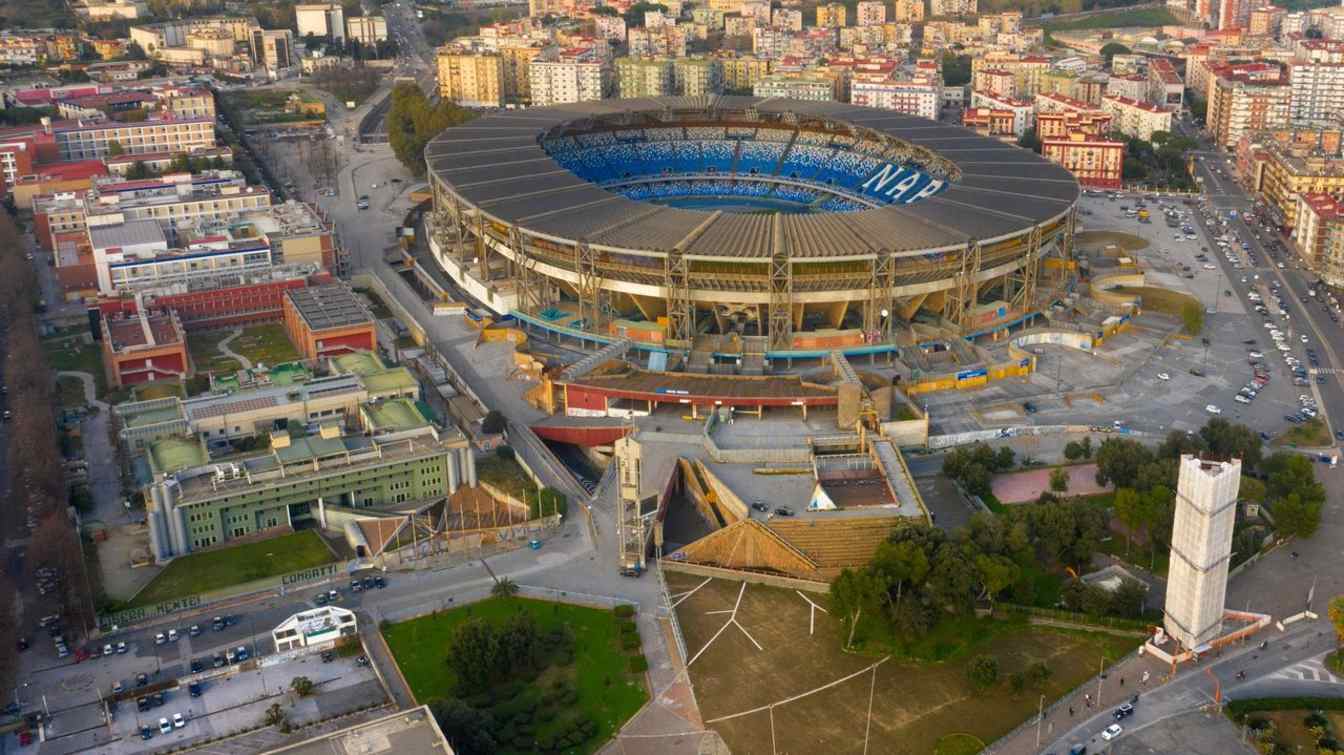Italy: Could Stadio Maradona be sold to SSC Napoli? The mayor has a plan
source: StadiumDB.com; author: Paulina Skóra
 In Naples, the debate over the future of Stadio Diego Armando Maradona has reignited. Following Milan’s decision to sell San Siro, mayor Gaetano Manfredi announced that the city is open to a similar approach and ready to work with a private investor — provided a credible proposal is presented.
In Naples, the debate over the future of Stadio Diego Armando Maradona has reignited. Following Milan’s decision to sell San Siro, mayor Gaetano Manfredi announced that the city is open to a similar approach and ready to work with a private investor — provided a credible proposal is presented.
Advertisement
A new opportunity for Napoli and the city
Manfredi emphasized that if the club or a private consortium wishes to invest in the Fuorigrotta stadium, the city will not stand in the way. He cited Milan as an example, where Inter and AC Milan purchased San Siro for €197 million as part of a broader redevelopment plan worth €1.2 billion in the same district.
The idea that SSC Napoli could take ownership of the Stadio Maradona has sparked widespread discussion in the city. The issue extends beyond sport — it’s about investment, modern infrastructure management, and the future of Fuorigrotta.
Ownership would give the club full control of the facility, turning matchdays into a continuous economic engine — not just during the 19 home games per season but throughout the entire week. It would allow Napoli to redesign hospitality areas, restaurants, the club museum, and retail zones, transforming the venue into a seven-day destination for tours, events, and business meetings.
This could also diversify the club’s revenue streams: in addition to tickets and season passes, profits could come from premium seating, venue sponsorships, cultural events, and tourism-related activities. Financially, ownership means greater stability — no rent, predictable maintenance costs, and access to capital and partnerships under long-term business plans.
 © Marino Carelli
© Marino Carelli
Modern management and the fan experience
A club-owned stadium gives Napoli full control over maintenance and modernization. The club would set its own priorities — from refurbishment schedules and service standards to technological upgrades. That translates to cleaner facilities, smoother entry systems, shorter queues, clearer navigation, and a cashless, connected fan experience supported by high-speed Wi-Fi and data analytics.
A modernized stadium could also serve as a technological platform, providing crowd-flow analysis and behavioral insights to enhance the matchday experience in a transparent and ethical way.
From a sporting perspective, better infrastructure provides a competitive edge. Improved medical and training facilities, optimized lighting, and high-quality turf directly impact performance. A well-run stadium generates income that can be reinvested in the team — creating a virtuous cycle that has long fueled Europe’s elite clubs.
Challenges: costs, bureaucracy, and urban impact
For the project to move from concept to reality, three key challenges must be addressed.
First, the economic equation: purchase price, renovation costs, and return on investment. The stadium, despite its heritage, requires major upgrades — new seating, enhanced VIP areas, improved accessibility, and modern energy systems. Second, administrative procedures. Clear urban planning decisions and a fair balance between public and private interests will be essential. The city wants to ensure that the stadium remains open to youth sports and community events, not just professional football. Third, the impact on residents. A year-round stadium could create jobs and services but will require thoughtful logistics — better public transport on matchdays, park-and-ride systems, and safe walking and cycling routes.
Environmentally, the plan includes solar panels, water recycling, LED lighting, and waste reduction measures. The venue could become an urban sustainability laboratory, with its spaces available for community use on non-match days.
 © Stefano Tammaro
© Stefano Tammaro
A chance to redefine Naples’ identity
From a marketing standpoint, owning the stadium could strengthen Napoli’s brand as a symbol of the city. A club museum, educational tours, and partnerships with the tourism and cultural sectors could turn Fuorigrotta into a vibrant hub — attracting not just fans but also visitors from around the world. For supporters, it would mean a closer bond with their club and a higher quality of service; for city authorities, economic growth, higher tax revenues, and new jobs. Ultimately, the project’s success will depend on transparency — clear plans, realistic timelines, and measurable social and economic impact. If managed properly, the Stadio Maradona could once again become a source of pride for all of Naples — on and off the pitch.
Advertisement
 StadiumDB
StadiumDB